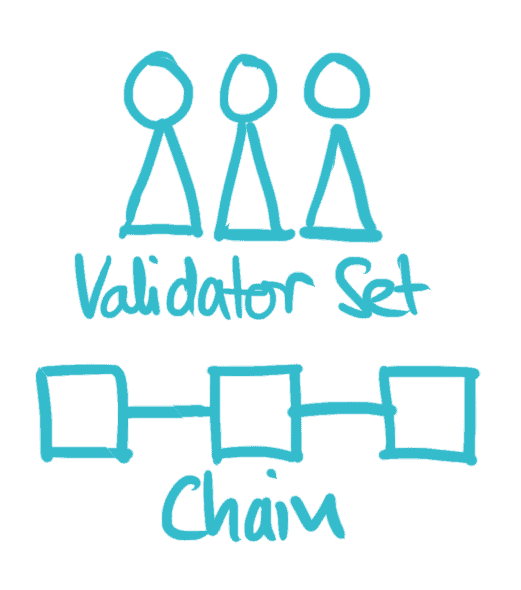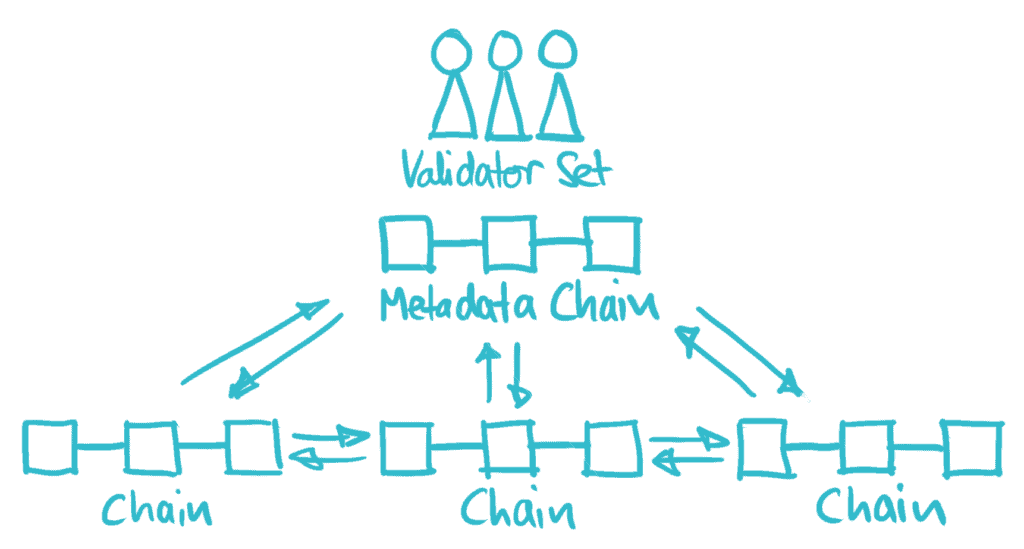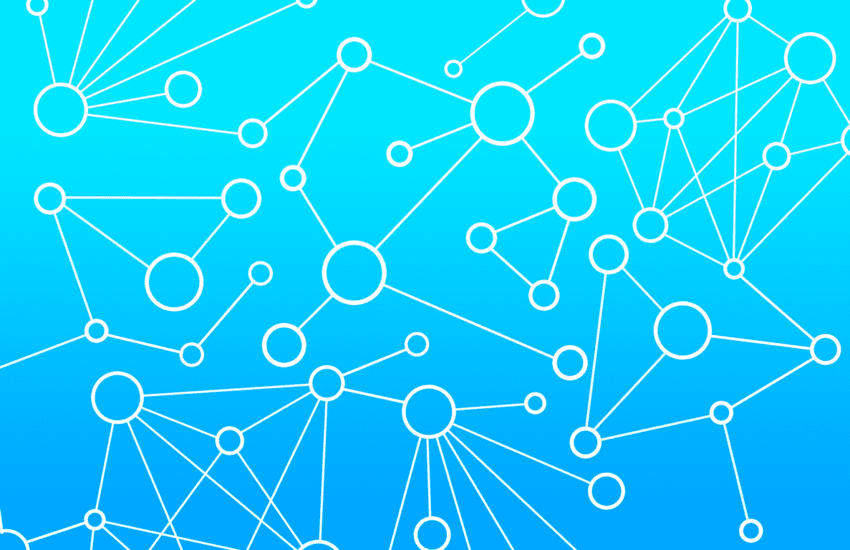Blockchain platforms often differ greatly in terms of the degree of decentralization, security, performance and usability. Of course, there are countless design parameters that platform creators can tweak to affect these blockchain characteristics. A very central parameter is the basic architecture of a blockchain platform. Or to put it more concretely: Does the blockchain platform consist of just one chain or multiple chains? Do all chains on the blockchain platform use the same set of validators or does each chain have its own set of validators? Answering these questions has a very fundamental impact on the characteristics of a blockchain platform. We want to take a closer look at this in this post.
Approach 1: One chain, one validator set

The classic approach to blockchain platform architecture is to use a single chain and validator set. Bitcoin introduced this architecture in 2009 and Ethereum also adopted this approach when it went live in 2015. Recent prominent representatives of this architecture are Algorand, Binance Smart Chain (BSC) and Solana. Choosing this architecture variant means that all transactions in the network are carried out on the same chain and with the same security standard. This simplifies the LEGO principle, which is central to the DeFi space: If all DeFi services run on the same chain, then these services can be easily combined into new, innovative services.
The pros and cons of the “one chain, one validator set” approach can be summarized as follows:
Advantages:
- The simplest architecture approach that has been successfully tested over many years and has proven itself.
- All DeFi services run on the same chain and can therefore be combined very easily.
Disadvantages:
- As has been shown in the case of Ethereum in particular, scaling with just a single chain is probably an impossibility. That is why Ethereum will soon switch to a multichain approach.
Approach 2: Multiple chains, one validator set

Ethereum 2.0 and Polkadot are the most prominent examples of an architecture where a single validator set validates multiple chains of the blockchain platform. In the case of Ethereum 2.0, the metadata chain is the so-called beacon chain, which is already live today. And the other chains are called shard chains in Ethereum 2.0, of which there will be 64 (not live yet). In the case of Polkadot, the metadata chain is referred to as the relay chain and the approx. 100 other chains are called parachains.
Although we call Ethereum 2.0 and Polkadot in the same architecture category here, the two ecosystems follow a quite different multichain approach: The 64 Ethereum 2.0 shard chains are homogeneous chains that all share the same native token (ETH). At Polkadot, on the other hand, the approximately 100 parachains are heterogeneous, application-specific chains that can be rented by individual organizations for a certain period of time in order to launch their own dApps (decentralized applications) and native tokens.
In this category we see the following advantages and disadvantages:
Advantages:
- A common validator set guarantees consistent security across all chains of the ecosystem.
- Potentially higher performance because transaction processing can be parallelized across chains.
Disadvantages:
- Massively higher complexity and much less tested than the “one chain, one validator set” approach.
- The distribution of DeFi services across multiple chains makes the LEGO principle – i.e. combining DeFi services to create new, innovative services – difficult. Communication across chain boundaries is currently still a major challenge.
Approach 3: Multiple chains, multiple validator sets

The third architectural approach offers blockchain developers the most flexibility by providing developers with frameworks within which developers can freely configure their own chains, native tokens, and security models. Cosmos and Avalanche are prominent representatives of this category. The Cosmos network is probably the most successful here, because many successful blockchains have already been launched following the Cosmos standard. These include, for example, Binance Chain or Thorchain. Terra could also be counted among them, but after the recent events one can no longer position this chain as a success. What is exciting about the Cosmos network is that a Cosmos chain has the freedom to use either its own validator set or the validator set of the Cosmos hub chain.
Again, the advantages and disadvantages are listed here:
Advantages:
- Maximum flexibility to create individual, application-specific chains.
- Potentially higher performance because transaction processing can be parallelized across chains.
Disadvantages:
- No guarantee of the security level of each chain as each chain is free to apply its own set of validators at will.
- Massively higher complexity and much less tested than the “one chain, one validator set” approach.
- The distribution of DeFi services across multiple chains makes the LEGO principle difficult. Communication across chain boundaries is currently still a major challenge.
This brings us to the end of our brief discussion of blockchain architectures. If you want to delve deeper into the topic, I recommend the paper by THE BLOCK Research below.
Source:
–Layer-1 Platforms: A Framework for Comparison, THE BLOCK Research (2021)
